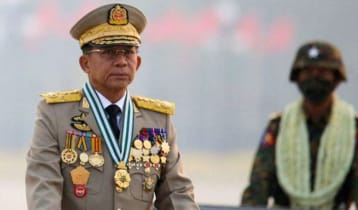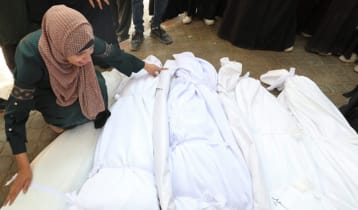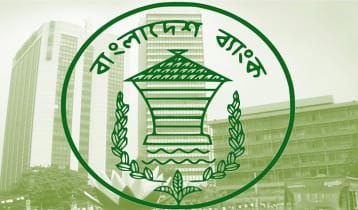Autocrats and cities: How capitals have become a battleground
David Jackman and Tom Goodfellow || risingbd.com

Prime Minister Sheikh Hasina, the world’s longest reigning female political leader, fled Bangladesh on 5 August 2024 for the safety of India.
Meanwhile, hundreds of thousands of protesters descended on Bangladesh’s capital city, Dhaka. The crowds ransacked her official residence, occupied the nation’s parliament and burnt down her family home.
Hasina, who had ruled the country for more than 20 years in total, had been widely accused of turning autocratic and clamping down severely on any opposition to her rule.
For many, the Bangladesh revolution offers hope in the context of growing global authoritarianism. It illustrates the power of the youth to confront entrenched leaders, and the fragility of authoritarianism. It also highlights a striking feature of contemporary global politics: how central capital cities are to the political life of nations.
In our new book, Controlling the Capital: Political Dominance in the Urbanizing World, a diverse range of scholars argue that capital cities are crucial political sites. They’re where governing elites seek to assert and maintain political control, and they are also stages for political contestation.
The book is focused on sub-Saharan Africa and South Asia, the two fastest-urbanising regions of the world.
Authors explore the strategies and tactics used by ruling elites to politically dominate their capital cities in Bangladesh, Ethiopia, Sri Lanka, Uganda, Zambia and Zimbabwe.
The authors also consider how urban populations have engaged with these efforts. People may resist authority, but they can also cooperate with it in ways that benefit themselves – which sometimes reinforces or supports authoritarian control.
This is increasingly important in the context of two contemporary trends. First, authoritarianism is growing globally. Just 10 years ago under half of the world’s population lived under authoritarian rule; now the figure is at 71%. The second trend is the ongoing rapid urbanisation of the world’s population, with the majority of us globally now living in urban areas.
Over the past year we’ve seen how capital cities are spaces for contestation.
Some pro-democracy movements draw from their own histories of struggle and the paths that have been carved by those before them. The template of Bangladesh’s 2024 revolution is ingrained in politics from the ways in which liberation was fought and how later struggles against authoritarian rule were won. The capital city has also been crucial, and students at Dhaka University were key mobilisers in such movements.
In other contexts, the link between political resistance and urban areas is a relatively new and surprising route to political change. One example is “the struggle” seen in Sri Lanka’s capital Colombo and the unseating of the Rajapaksa family, who were perceived as increasingly authoritarian rulers of the country. The Colombo chapter in this volume highlights how such protests emerged in a context where urban unrest had rarely threatened those in power before.
Even where anti-authoritarian protests have proved futile time and again, urban populations rarely remain quiet.
In Kampala, Uganda, demonstrations prior to the 2021 elections resulted in a horrifying government crackdown. Inspired by events in neighbouring Kenya, protesters took to the streets once more in July 2024 to demonstrate against corruption.
The protests that erupted in Nairobi from late June 2024 against tax rises engulfed the capital city. They continued for some time, fuelled by the brutal police response. Similarly, Nigeria’s 2020 #EndSARS protests against police brutality created a powerful movement in cities such as Abuja and Lagos which shook government, and resonated across much of the continent.
In an age of social media, learning and mimicry across national borders is increasingly common. One of the defining images of Kenya’s 2024 urban uprising was of a group of men with their arms raised and crossed at the wrists – a gesture of anti-authoritarian protest that gained particular resonance several years back during neighbouring Ethiopia’s own uprising.
As urban protest seems set to continue and spread – often taking intentionally similar forms – techniques of urban authoritarian control are more varied and complex.
Strategies to dominate and control city populations can be dramatic and repressive – such as the brute force of police violence – and they can also be subtle, deeply ingrained, and sometimes difficult to discern.
Our book argues that authoritarian leaders are increasingly aware of the power of the urban masses. As a result, they are using a range of subtle, and not-so-subtle, tactics to entrench their domination in capital cities.
The first are policies and favours that actively build support among urban groups. These can range from inclusion in political parties to investments in social provisions or infrastructure to win support. The book’s chapter on Addis Ababa shows how the latter were particularly striking under the previous governing regime in Ethiopia.
The second are repressive interventions that aim to crush opposition. These are also diverse, and include violent crackdowns, but also surveillance and intimidation.
In practice, the two types of interventions often overlap. The line also blurs through various forms of manipulation. For instance, misinformation or the delivery of goods in exchange for performances of political loyalty, underpinned by implicit threats of coercion. We also highlight the significance of urban geography.
Ruling elites often seek to divide city populations (for example inner-city dwellers versus the peripheries). This is evident in our book’s chapter on Colombo, Sri Lanka. The Rajapaksas tried to consolidate power by appealing to the new middle class suburbanites through “beautification” projects. But these displaced and excluded the inner-city poor.
Chapters on Harare and Kampala also show how particular peripheral areas have become central to efforts to build an urban support base by Zanu-PF and the National Resistance Movement. This often plays out through the informal parcelling out of land to supporters.
The article published in the Conversation
Dhaka/Mukul



















